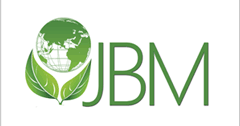Abstract
Agro-wastes are abundant in both rural and urban areas and when carelessly disposed off to the environment by dumping or burning, they lead to environmental pollution, and consequently to health hazards. Growing of edible mushroom on these wastes can contribute to decrease in environment pollution. This work investigated the growth and yield of Pleurotus ostreatus on different agro-wastes: plantain midrib (PM), corn straw (CS), sugarcane bagasse (SB) and their combinations (PM+CS, PM+SB, CS+SB, CS+PM+SB) with a view to finding the best substrate for the growth of P. ostreatus. The experiment was carried out using completely randomized design with seven treatments and three replications. Results revealed that mycelia growth period and days to pinhead formation were faster in corn straw (7 and 11 days, respectively from the day of inoculation), this was followed by CS+SB (8 and 12 days, respectively) while CS+PM+SB recorded the longest days (13 and 17, respectively). Stipe length ranged from 2.6 cm in PM to 3.3 cm in CS+PM while the pileus diameter was between 3.3 cm in CS and PM and 4.3 cm in PM+SB. Number of fruiting bodies, fresh and dry weights of the mushroom were significantly higher in CS than in the other substrates. The least number of fruiting bodies, fresh and dry weights were recorded in CS+PM+SB.
DOI
https://doi.org/10.35691/JBM.0202.0129
Recommended Citation
Iwuagwu, M. O.,
Nwaukwa, D. S.,
& Nwaru, C. E.
(2020).
Use of Different Agro-wastes in the Cultivation of Pleurotus ostreatus (Jacq.) Kummer,
Journal of Bioresource Management, 7
(2).
DOI: https://doi.org/10.35691/JBM.0202.0129





